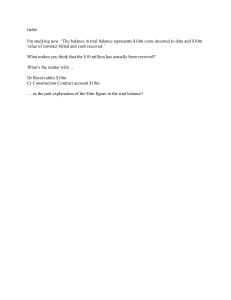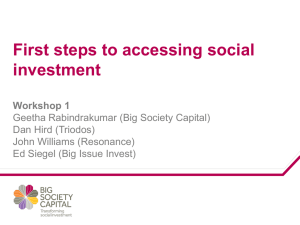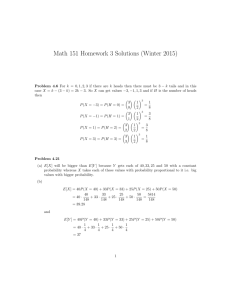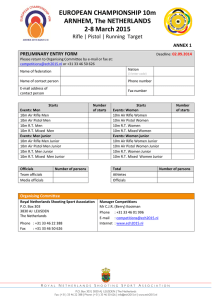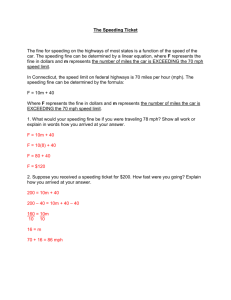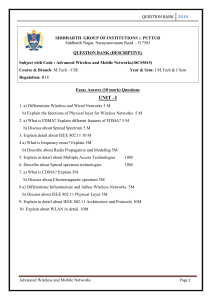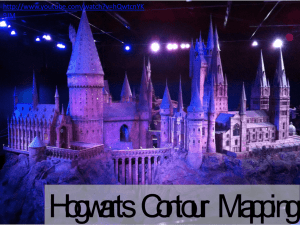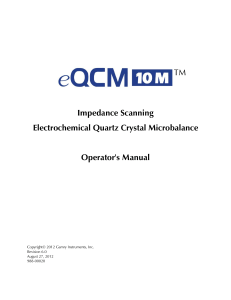File
advertisement
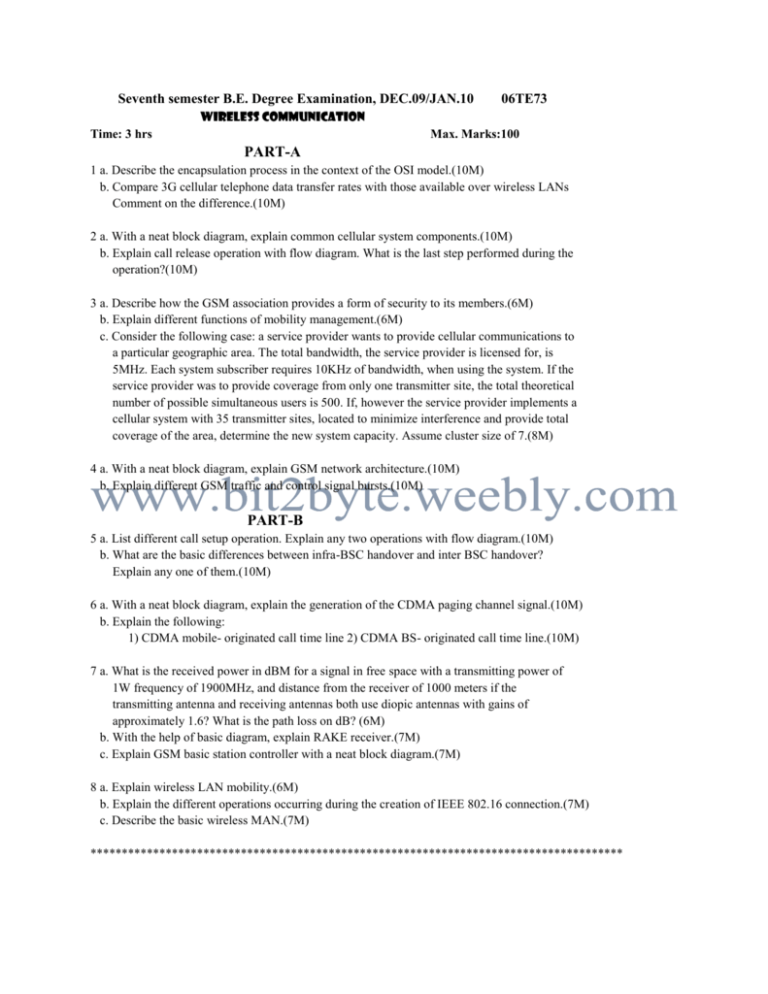
Seventh semester B.E. Degree Examination, DEC.09/JAN.10 06TE73 wireless communication Time: 3 hrs Max. Marks:100 PART-A 1 a. Describe the encapsulation process in the context of the OSI model.(10M) b. Compare 3G cellular telephone data transfer rates with those available over wireless LANs Comment on the difference.(10M) 2 a. With a neat block diagram, explain common cellular system components.(10M) b. Explain call release operation with flow diagram. What is the last step performed during the operation?(10M) 3 a. Describe how the GSM association provides a form of security to its members.(6M) b. Explain different functions of mobility management.(6M) c. Consider the following case: a service provider wants to provide cellular communications to a particular geographic area. The total bandwidth, the service provider is licensed for, is 5MHz. Each system subscriber requires 10KHz of bandwidth, when using the system. If the service provider was to provide coverage from only one transmitter site, the total theoretical number of possible simultaneous users is 500. If, however the service provider implements a cellular system with 35 transmitter sites, located to minimize interference and provide total coverage of the area, determine the new system capacity. Assume cluster size of 7.(8M) 4 a. With a neat block diagram, explain GSM network architecture.(10M) b. Explain different GSM traffic and control signal bursts.(10M) PART-B 5 a. List different call setup operation. Explain any two operations with flow diagram.(10M) b. What are the basic differences between infra-BSC handover and inter BSC handover? Explain any one of them.(10M) 6 a. With a neat block diagram, explain the generation of the CDMA paging channel signal.(10M) b. Explain the following: 1) CDMA mobile- originated call time line 2) CDMA BS- originated call time line.(10M) 7 a. What is the received power in dBM for a signal in free space with a transmitting power of 1W frequency of 1900MHz, and distance from the receiver of 1000 meters if the transmitting antenna and receiving antennas both use diopic antennas with gains of approximately 1.6? What is the path loss on dB? (6M) b. With the help of basic diagram, explain RAKE receiver.(7M) c. Explain GSM basic station controller with a neat block diagram.(7M) 8 a. Explain wireless LAN mobility.(6M) b. Explain the different operations occurring during the creation of IEEE 802.16 connection.(7M) c. Describe the basic wireless MAN.(7M) *************************************************************************************
